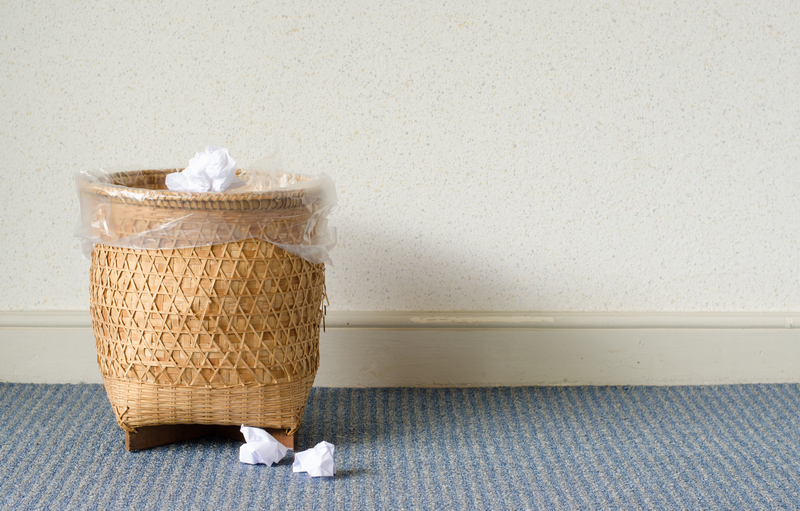PPE Waste Disposal Tips to Protect Our Planet
The surge in PPE usage over recent years has played an essential role in safeguarding public health. However, this increased reliance on personal protective equipment like masks, gloves, gowns, and face shields has also contributed to a new environmental challenge: PPE waste. Discarded PPE materials litter streets, clog waterways, and potentially harm wildlife. Understanding and practicing proper PPE waste disposal is now just as vital as using these protective items. In this comprehensive guide, we'll explore effective strategies, eco-friendly alternatives, and essential PPE disposal tips to help everyone play a role in protecting our planet.

Why is PPE Waste a Growing Environmental Concern?
The outbreak of global pandemics, most notably COVID-19, led to an exponential increase in PPE production and consumption year after year. According to recent studies, billions of disposable masks and gloves are used worldwide every month, with a significant portion ending up outside of proper waste management systems. Here's why proper PPE waste disposal matters:
- Environmental Pollution: Many PPE items are made from plastics or synthetic fibers that don't decompose easily, polluting land and marine environments for decades.
- Threats to Wildlife: Animals can get entangled in discarded masks or ingest gloves, mistaking them for food, often with fatal consequences.
- Public Health Hazards: Improperly disposed PPE can carry pathogens, posing risks to sanitation workers and the general population.
- Strain on Waste Management: Overwhelmed systems struggle to properly process the sudden surge of PPE waste, leading to more pollution.
Types of PPE Waste
_Before adopting efficient PPE waste management practices, it's important to understand the most common forms of PPE and their properties:_
- Masks: Usually made of polypropylene or other synthetic materials.
- Gloves: Often latex, vinyl, or nitrile; they can be contaminated after use.
- Face Shields & Goggles: Reusable but occasionally disposed of; mostly plastic-based.
- Gowns & Aprons: Polyethylene or polypropylene fabrics are common.
- Sanitizer Bottles & Dispensers: Additional PPE-related plastic waste.
Each PPE type comes with its own disposal challenges, but most are not biodegradable and need special attention.
The Ultimate Guide: How to Dispose of PPE Responsibly
1. Never Litter PPE Items
_It might seem obvious, but a significant portion of PPE waste comes from individuals discarding masks and gloves on streets, parks, or public transportation._ Always place used PPE in a proper waste bin--this prevents pollution, protects others, and helps keep communities clean.
2. Separate PPE from Regular Recycling
While it's tempting to recycle everything, most PPE products are not recyclable through regular municipal recycling programs due to contamination risk and material composition.
- Avoid throwing used PPE into recycling bins. This contaminates the entire recycling stream.
- PPE should be bagged and placed with general waste unless a specialized program exists.
3. Seal Contaminated PPE Before Disposal
Properly sealing PPE waste is crucial to minimize transmission risks. Used masks and gloves can potentially carry germs.
- Double bag PPE: Place used masks and gloves in a plastic bag, tie it securely, and then place it in another bag.
- Ensure the final bag is knotted tightly before disposing of it in a designated waste bin.
4. Never Burn PPE Waste at Home
*Burning PPE releases harmful toxins* and microplastics into the air. Home incineration is dangerous and contributes to air pollution and public health hazards. Leave PPE waste management to professional facilities.
5. Dispose of Reusable PPE Safely
Some PPE--such as cloth masks or reusable face shields--are designed for multiple uses. When these items reach the end of their lifespan:
- Wash reusable masks before disposing of them in the bin to reduce microbial load.
- Dismantle face shields if possible--separate the plastic from elastic components for more efficient processing.
6. Stay Updated on Local PPE Waste Disposal Regulations
Municipalities differ in how they handle PPE waste. Some cities offer specialized PPE collection bins at healthcare centers, offices, or public spaces. Check your local council's waste management website for:
- Guidelines on PPE waste separation and collection schedules.
- Drop-off points for PPE disposal.
- Information about community-based recycling or upcycling programs.
Eco-Friendly Alternatives: Reducing the Need for Single-use PPE
The most effective way to tackle PPE waste pollution is by minimizing waste generation in the first place. Here's how you can make a difference:
- Choose Reusable Masks: Opt for cloth masks whenever practical. Ensure they meet safety standards and wash them regularly with soap and hot water.
- Glove Use Only When Necessary: Use gloves only in a medical or required setting; otherwise, frequent and thorough hand-washing is preferable.
- High-quality Reusable Face Shields and Goggles: These items can be sanitized and reused many times, reducing overall plastic waste.
- Bulk Sanitizer Refills: Buy hand sanitizer in bulk to refill smaller bottles, reducing packaging waste.
Innovative Ways to Reuse and Recycle PPE Waste
Although traditional recycling streams don't handle most PPE waste, innovators and communities have begun developing new solutions:
1. Specialized PPE Recycling Programs
Companies like TerraCycle and certain startups offer tailored PPE recycling services. They collect and process disposable masks, gloves, and even gowns, turning them into construction materials or energy sources. Check online to see if such initiatives operate in your region.
2. PPE Upcycling Initiatives
*Some research groups and artists use discarded masks and gloves to create art, insulation, or composite materials.* Supporting or promoting these projects raises awareness and diverts waste from landfills.
3. Support Legislation for Extended Producer Responsibility (EPR)
_Advocate for policies_ where manufacturers integrate waste collection and recycling into their business models. EPR programs can incentivize companies to design PPE products with end-of-life management in mind.
Protecting Wildlife from PPE Waste
_Discarded PPE can have disastrous effects on wildlife, especially birds, fish, and marine mammals._ Here are vital PPE waste prevention tips to minimize risks:
- Always snip elastic bands from disposable masks before disposal to prevent animal entanglement.
- Never flush PPE items like masks, gloves, or wipes down the toilet.
- Participate in community clean-ups to remove PPE litter from natural areas.
- Support wildlife organizations working to combat plastic pollution.
Protecting Human Health: Safe PPE Handling Practices
1. Safe Removal
Always remove PPE by touching straps or outer edges--avoid contact with contaminated surfaces.
2. Hand Hygiene
After handling used PPE, wash your hands thoroughly with soap and water or use a hand sanitizer containing at least 60% alcohol.
3. Keep PPE Out of Reach
Dispose of (or store for washing) used PPE immediately. Don't leave it within reach of children or pets, who could come into contact with contaminants or choke on small parts.
How Businesses and Organizations Can Manage PPE Waste Responsibly
Workplaces, medical facilities, and public institutions generate large volumes of PPE waste. Here are some restoration tips and sustainable strategies for organizations:
- Set up separate PPE disposal bins: Provide clearly labeled and sealed bins where staff and visitors can dispose of PPE safely.
- Partner with medical waste management companies: Many firms offer environmentally conscious collection, transport, and processing of hazardous PPE waste.
- Offer reusable PPE options: Supply employees and clients with high-quality, washable masks and shields.
- Educate and Train: Ensure all staff are aware of proper PPE handling, storage, and disposal policies.
Case Study: Global Efforts in PPE Waste Management
Countries and cities worldwide are pioneering new approaches to the PPE pollution problem:
- France: The city of Paris installed special PPE recycling bins in busy areas, and recycling units convert the waste into construction materials.
- United Kingdom: Municipal councils coordinate regular collection drives for PPE waste, while companies invest in novel recycling tech.
- India: Several NGOs organize mask and glove collection centers and offer eco-friendly disposal training for communities.
*By studying and replicating such projects, other regions can implement best practices and protect local environments.*
The Future of Sustainable PPE
The pandemic-induced rise in PPE waste created an urgent need for innovation:
- Biodegradable PPE developments--scientists are creating face masks and gloves from plant-based polymers that break down faster than traditional plastics.
- Smart tracking systems--some companies use QR codes or radio chips to monitor PPE usage and disposal for safer waste management.
- Zero-waste workplaces--institutions are seeking to combine reusable PPE, robust cleaning schedules, and advanced disposal systems to minimize environmental impact.

Summary: Key Takeaways for Effective PPE Waste Disposal
- Never litter PPE; always use designated bins.
- Do not place used PPE in recycling streams unless joined in a specialized program.
- Always double-bag and seal contaminated PPE properly before disposal.
- Consider reusable PPE alternatives whenever possible.
- Stay informed on local laws and guidelines regarding PPE disposal.
- Support initiatives and organizations aiming to recycle or upcycle PPE waste.
Conclusion: Our Shared Responsibility in PPE Waste Management
As the world continues to prioritize health and safety, the proper disposal of PPE waste remains a critical environmental and public health issue. By adopting mindful disposal habits, embracing sustainable alternatives, and supporting innovative solutions, each of us can contribute to cleaner communities and a healthier planet. Let's make responsible PPE waste management a fundamental part of our daily lives and encourage others to do the same--because protecting our planet is everyone's duty.
Together, we can reduce PPE waste and create lasting, positive change for the environment.